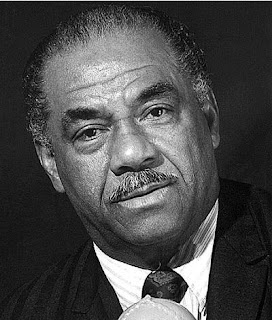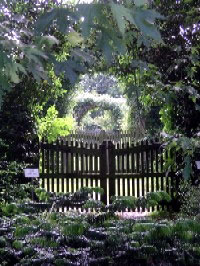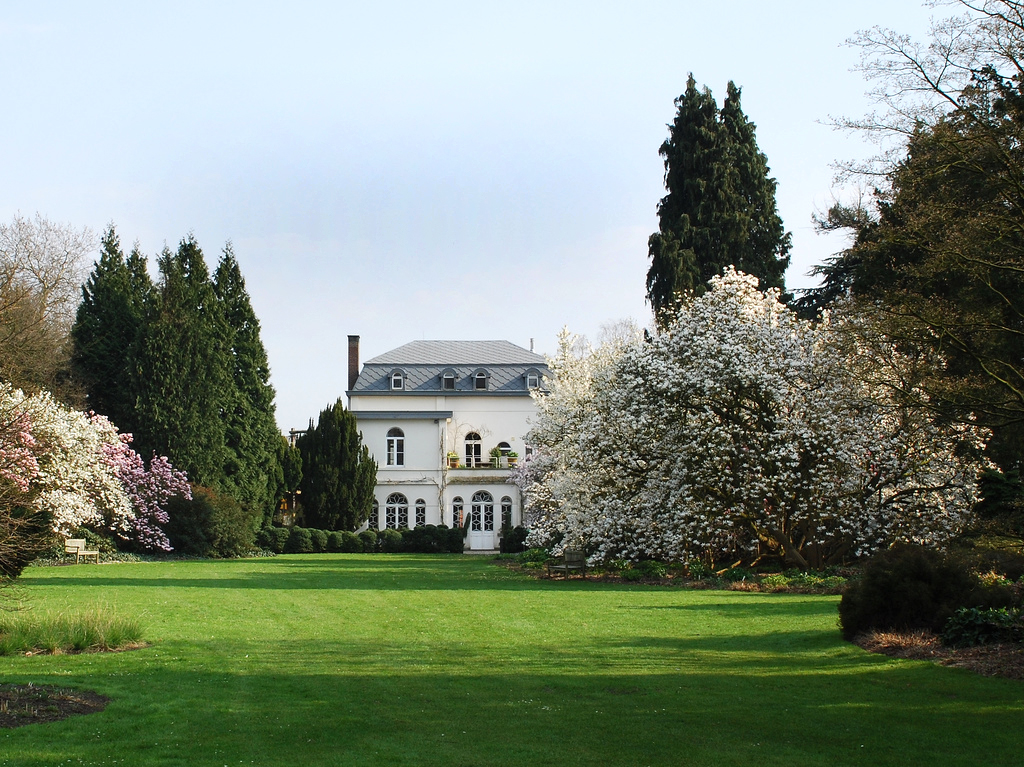Machito
and
His Afro-Cuban Jazz Ensemble
With Flute To Boot
1958
Tracks:
A1. Brazilian Soft Shoe
A2. Love Chant
A3. Afro-Jazziac
A4. Ring A Levio
A5. Afternoon Death
A6. To Birdland And Hurry
B1. Calypso John
B2. The African Flute
B3. Bacao
B4. Carabunta
B5. The Davis Cup
B6. Answer Me
Featuring:
Herbie Mann (fl)
1958
Tracks:
A1. Brazilian Soft Shoe
A2. Love Chant
A3. Afro-Jazziac
A4. Ring A Levio
A5. Afternoon Death
A6. To Birdland And Hurry
B1. Calypso John
B2. The African Flute
B3. Bacao
B4. Carabunta
B5. The Davis Cup
B6. Answer Me
Featuring:
Herbie Mann (fl)
Johnny Griffin (ts)
Curtis Fuller (tb)
♫☆`*♥¸¸.•*¨*•♫☆`*♥¸¸.•*¨*•☆♫
.ღ•:*´♥`*:•ღ.
♫☆`*♥¸¸.•*¨*•☆♫`*♥¸¸.•*¨*•☆♫
.ღ•:*´♥`*:•ღ.
♫☆`*♥¸¸.•*¨*•☆♫`*♥¸¸.•*¨*•☆♫
Machito - Biography
By Robert Leaver
Francisco Raúl Gutiérrez Grillo was born in the heart of Havana, Cuba where his father manufactured cigars. His musical talent was evident when as a mere child he sang and danced around the factory entertaining the workers. He became known by his nickname, Machito or “little macho,” as he sang and played maracas in various groups before relocating to New York City. By 1940 he was making his mark as a bandleader and throughout the 40s and 50s he would remain at the vanguard of Afro-Cuban jazz. He was instrumental in connecting the Latin and African-American musical realms; his group served as a bridge between Spanish and Black Harlem mixing jazz and Afro-Cuban musical elements. In doing so Machito & his Afro-Cubans changed both musical forms, forging them New York’s urban crucible into a new conception- Afro-Cuban or Latin jazz.
After singing and performing with Sexto Occidente de María Teresa Vera, Sexteto Agabama (singing harmony vocals with the great Abelardo Barroso), and Conjunto Los Jóvenes Rendención in Havana he was tapped to travel to New York City with La Estrella Cubana in 1937. His enthusiasm and ambition let him to gigs with various groups in New York including Conjunto Moderno, Cuarteto Caney and Orquesta Hatuey. He made his first recording as lead singer with pianist Noro Morales’ group and performed with the popular Pupi Campo. Machito formed his own group in 1939 with horn player, arranger and brother-in-law Mario Bauza who would continue as his principal musical director for decades. Their original configuration didn’t last and Machito joined Orquesta Siboney and recorded with Hollywood’s favorite Latin bandleader, Xavier Cugat.
Machito’s recordings with Cugat such as “Llora timbero,” “Cachita,” and “Bim Bam Bum” gave him a new level of popularity, perfect for launching his own group. Towards the end of 1940 he teamed up again with Bauza to create Machito & his Afro-Cubans. Modeled after swing orchestras with a large brass contingent of trumpets and saxophones they featured an expanded Afro-Cuban rhythm section. Their inaugural gig at Park Plaza Ballroom in New York on December 3, 1940 marked the beginning of a new era in Latin music. Machito and Bauza collectively would create a modern, sophisticated Latin big band sound that charged the swing of Ellington with a high-energy jolt of complex Afro-Cuban rhythms. The mixture would prove compelling to both aficionados of Jazz and Latin music and help break the music out of the barrio.
Steadily recording and releasing 78 r.p.m. Singles for Decca records, Machito and his Afrocubans had a huge hit in 1942 with “Sopa de pichón” (pigeon soup). The handsome and popular singer Miguelito Valdés joined the group that year and recorded a number of sides. The original Mr. Babalu, Valdés boosted the bands popularity and provided the model for the Desi Arnaz character on the television show I Love Lucy. The band continued despite Machito’s stint in the U.S. Army in 1943 as Puerto Rican singer Polito Galíndez, Cuban singer/composer Marcelino Guerra and Machito’s own sister Graciela took turns fronting the band.
During this time of war and change they began experimenting with different brass and reed alignments changing from the two trumpets, three sax lineup to two trombones, one trumpet and three saxes, mostly played by musicians from the jazz world. Combined with the Afro-Cuban rhythm section of piano, upright bass, conga, bongo and timbales and several harmonizing singers they unleashed a new musical force on the big apple. When Machito returned after his military duty was completed Graciela became a fixture by her brother’s side singing racy rumbas and romantic boleros.
They debuted the Mario Bauza composition “Tanga” (inspired by the African derived word for marijuana) in 1943 which musicologists now point to as the first distinct piece of music that one would call Afro-Cuban Jazz or Latin Jazz. Impresario Symphony Sid Torin coined the phrase “Cubop” to describe the sound. Bop luminaries such as Stan Kenton, Zoot Sims, Charlie Parker, Dizzy Gillespie, Howard McGhee, Herbie Mann, Buddy Rich, and Cannonball Adderley performed and recorded at various times with the group. The band kept busy performing in such famous venues as the Palladium and the Royal Roost and recording for numerous labels such as Decca, Roulette, Seeco, Verne, Crescendo, United Artists, and RCA Victor.
Tremendo Cumban 1949-1952 (Tumbao Spain 1991) compiles some of their timeless hits including “Donde Estabas Tú,” “Carambola,” “Blen Blen Blen,” “Mambo Inn,” “Si Si, No No,” and the title track. Another excellent compilation of late forties 78 r.p.m. recordings, Mucho Macho: Machito and his Afro-Cuban Salseros (Pablo 1978) showcases a variety of mambo variations; classics include “Asia Minor,” “U-Bla-Ba-Du,” “Donkey Serenade,” and a swinging version of W.C. Handy’s “St. Louis Blues.” In the ‘50s Machito would be instrumental in ushering in the golden era of Latin big bands and the mambo and cha cha cha crazes. Tunes such as “Chattanooga Cha Cha,” the Machito original “Relax and Mambo,” and “Mambo Infierno” marked the era; the LP compilation Machito plays mambo & cha cha (1956 Seeco) is commonly found in Latin music collections.
Long playing album releases such as Cha Cha Cha at the Palladium (1954 Tico), Asia Minor (1955 Tico), and The Sun Also Rises (1954 Tico) perfectly captured the spirit of the times. Kenya: Afro-Cuban Jazz (Roulette 1957, reissued as Latin Soul + Jazz, Tico 1973) is a dazzling recording that captures the vibrant acoustics of Pathé studios in East Harlem (which used to be the Odd Fellow’s Club). Great arrangements and ample jazz soloing capture the mambo era in full swing. The following year they released With Flute to Boot (1958 Roulette) featuring maestro flautist Herbie Mann. During this time when gang activity was rampant with the youth in New York the city called on Machito to perform a free concert in Central Park to quell the rising violence.
In the early ‘60s the band continued its relentless pace of gigging and recording. They released an excellent live recording, Machito at the Crescendo (GNP 1960), of mostly instrumental tunes such as “Pachanga at the crescendo,” “Cuban Fantasy,” and “Varsity Drag Combo” (whose inspiration is not as salacious as it may seem). The ‘60s ushered in the era of the violin and flute laden style of Latin dance called pachanga. Although Machito did not drop his monstrous brass section he brought in Panamanian flute wizard Mauricio Smith with The New Sound of Machito (Tico 1962). Iconic singer Miguelito Valdés returned to the fold briefly and they recorded Reunion (Tico 1963). The powerful vocals of his sister were front and center on the classic Esta Es Graciela or “This is Graciela” (Tico 1964); check out her version of the now standard “Guampampiro” The follow up album was entitled Sentimental and Intimate (Tico 1965) emphasizing the slower romantic bolero song form.
As the young Latin generation in New York turned to a more lean and gritty styles- boogaloo and salsa- Machito’s old style became a bit passé. In an effort to reach the youth he released Machito Goes Memphis (1967 RCA Victor) with Latinized versions of “In the Midnight Hour,” “Green Onions,” and oddly enough the Rolling Stones’ “Satisfaction.” Mostly overlooked at the time it remains a strangely compelling musical document.
With the era of the Palladium and mambo long gone, Machito and his musical partner Mario Bauza reunited with jazz legend Dizzy Gillespie and arranger Chico O’Farrill to record what would become a textbook for many Latin jazz aficionados- Afro-Cuban Jazz Moods (Pablo/OJC 1975). After that Machito and Bauza ended their four decades of collaboration and Machito brought his sons into the fold. Fireworks (Coco 1977) featured a new young vocalist, Lalo Rodriguez, who later became a star of the “salsa romantica” movement of the ‘80s.
Machito and his Salsa Big Band (Timeless 1982) is an excellent live recording from the North Sea Jazz Festival in Holland that catches the band in full swing as they stretch out, in contrast to the more constrained and shorter studio recordings. It was honored with a Grammy for Latin Jazz that same year. Live at North Sea (Timeless 1982) and Machito !!! (Timeless 1983) followed, both of which featured legendary Cuban trumpeter Chocolate Armanteros. The following year while in London for an extended stint at Ronnie Scott’s Jazz Club he passed away on April 15, 1984. With a career that spanned an impossible seven decades Machito is one of the most iconic and influential figures in the history of Latin music. Moreover he influenced the course of American jazz and popular music while constructing the framework for a new genre- Afro-Cuban jazz.
text source
Herbie Mann Wiki
♥
need to read a book?
try this one : )
♥















.jpg)


.jpg)












.gif)
















































+Front.jpg)

















